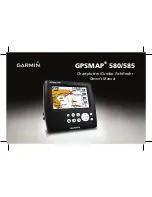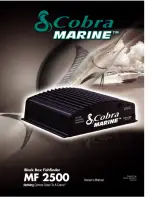
LEARNING TO USE YOUR LCR:
After installing the unit, transducer, and power cable as instructed, the LCR is ready for use. By
following the steps below you will be able to quickly learn how to use the LCR. Also, trouble
shooting suggestions are listed in these steps. Note: Perform steps 1 through 6 at idle or slow
speed. These steps will insure that your LCR is working properly.
Step 1:
Turn your LCR on by pushing the "On" button. The LCR's computer will automatically adjust the
sensitivity and depth scale so that in about one second you will see images appear on the right
side of the display and moving to the left. The small gap in the zero line allows you to see
movement on the display even when the bottom is not changing.
TROUBLE SHOOTING:
If nothing happens when the "On" button is pushed, check your electrical connections and fuse.
Also check that the red wire on the power cable is connected to the positive battery terminal and
that the black wire is connected to the negative battery terminal. If these wires are reversed it will
not damage the LCR.
It is normal if when reversing the boat, the bottom return is lost, since air from the prop is
being forced under the transducer. Remember the transducer cannot transmit through air.
TROUBLE SHOOTING: If the display comes on when the "On" button is pushed but no
bottom information is seen, check that the transducer connector is securely locked to the rear of
the LCR. Also insure that the transducer is completely submerged. A transducer cannot work
properly in air or through air bubbles in the water.
TROUBLE SHOOTING: In very shallow water, the bottom reading might have gaps or the
scale might change to the 0-120 foot scale. This is normal in one or two feet of water. The
automatic mode cannot "lock" onto the bottom in very shallow water.
Содержание LCR 3004
Страница 1: ......
Страница 19: ......
Страница 20: ...Brush or thick standing timber will appear as a thick mass with holes or gaps as shown above...























